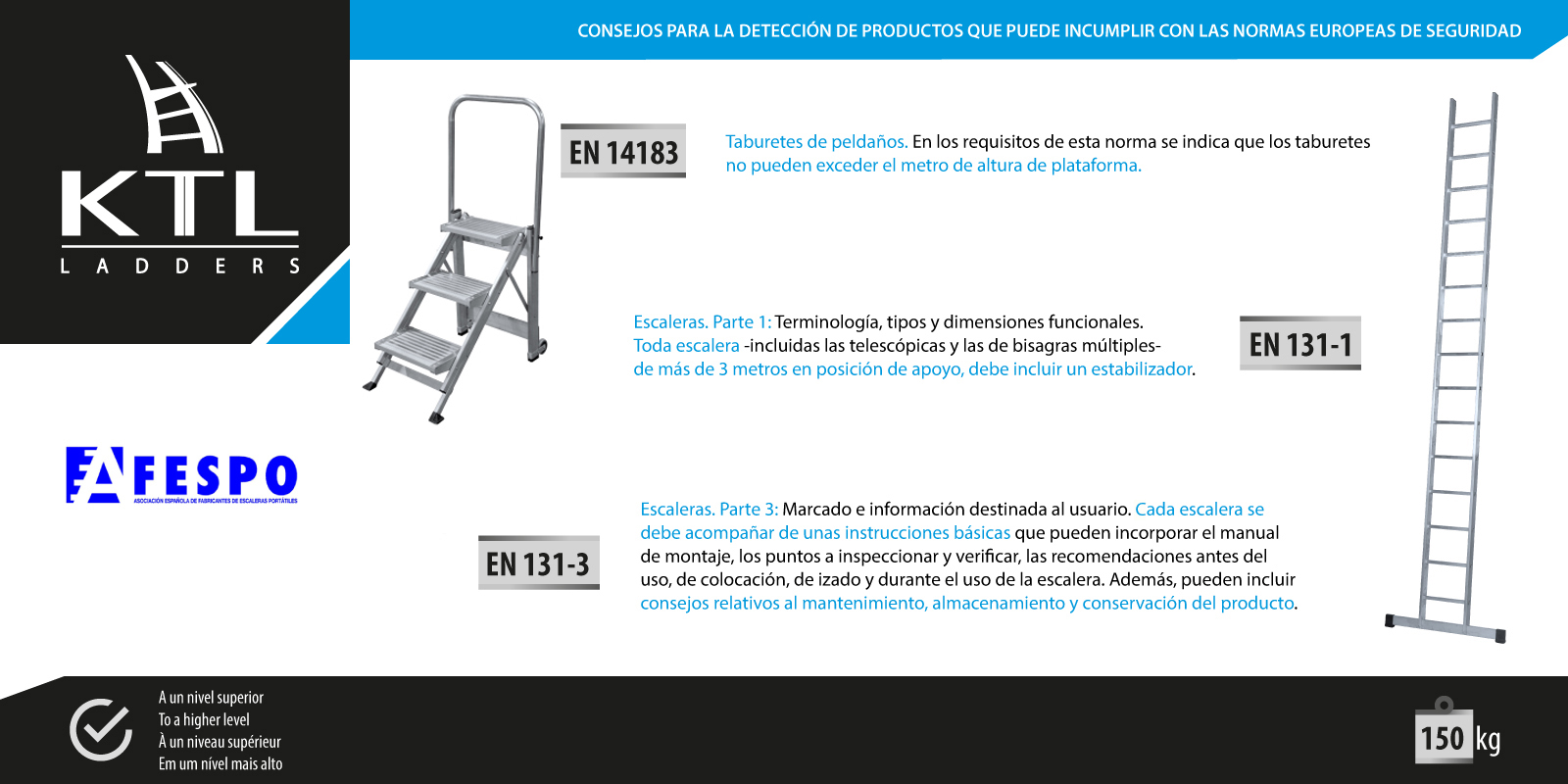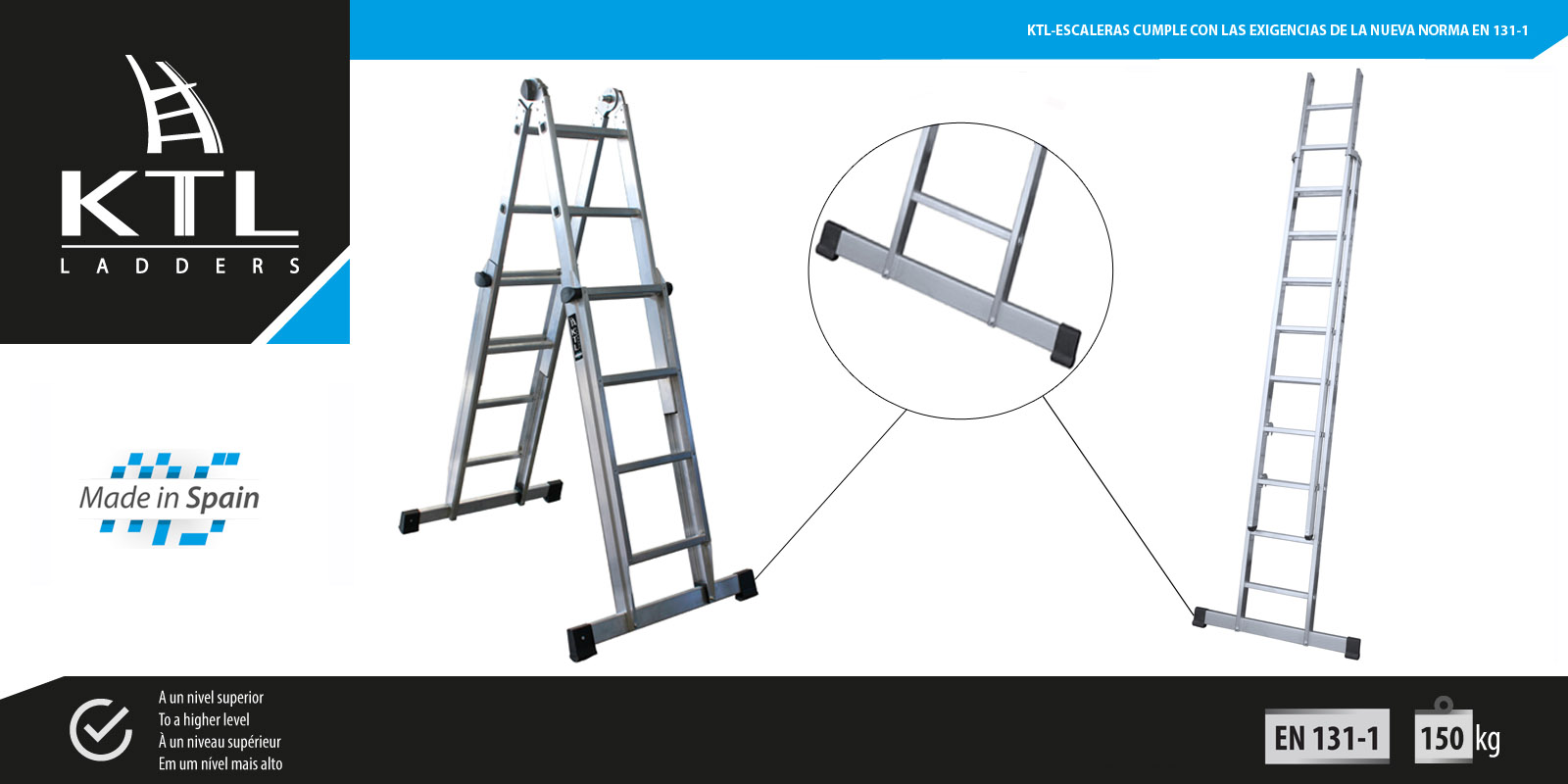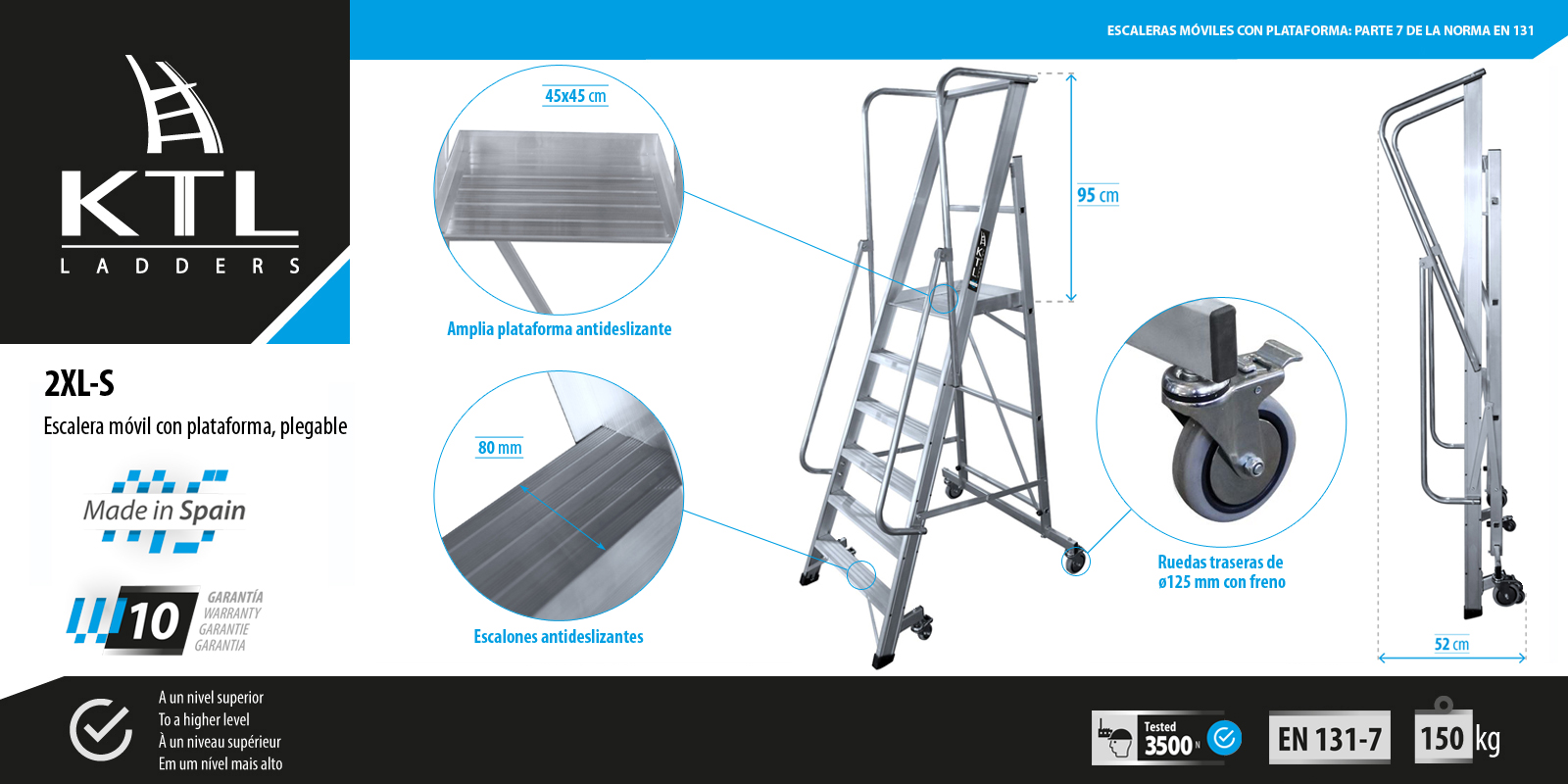In the spanish market for ladders and stools, we continue to witness unfair practices by importers and distributors that pose a serious risk to the safety and health of workers and users. These poor practices are associated with irregular marking of ladders and stools, as well as with their respective European Safety Standards, EN 131 and EN 14183, typically in products from China, Turkey, and Portugal. The rise of online sales has worsened the issue of poor practices with very low-quality ladders and stools, irregularly marked under the guise of these standards.
The Spanish Association of Portable Ladder Manufacturers (AFESPO) is determined and committed to achieving one of its main objectives: to provide consumers and users with increasingly safe, durable, and reliable ladders and stools. To this end, through collaboration with the AIDIMME laboratory, it conducts regular control tests on suspected fraudulent products and, in cases of non-compliance, reports them to the relevant authorities.
In recent years, spanish large retailers have invested significant resources, both human and financial, into their quality departments. Today, it is very difficult to find products in the online ladder and stool market that do not meet minimum quality standards. However, other channels have chosen to focus solely on price, without adequately and reliably controlling the quality of the products they offer to their customers. Rather than seeking safer, more durable, and long-lasting models, the economic crisis and the growth of the internet have led to a gradual decline in quality in the ladder and stool market due to the lack of rigor from importers, distributors, and purchasing centers.
Tips for detecting products with irregular marking
Here are some tips for detecting products that, despite being marked according to the EN 131 or EN 14183 standards, may not comply with European Safety Standards:
- The European Standard EN 131-3 specifies the provision of user information by the manufacturer, distributor, and owner of the ladder to ensure product safety. For this reason, each ladder should come with basic instructions that may include the assembly manual, inspection and verification points, recommendations for use, positioning, lifting, or during the use of the ladder, as well as tips related to maintenance, storage, and preservation of the product. This part of the EN 131 Standard has national standard status and, therefore, is mandatory.
- The European Standard EN 131-1 establishes the terminology, types, and functional dimensions of ladders, and in its latest version, has been mandatory since December 2016. Among the most significant changes is the requirement that all ladders over three meters in support position, including telescopic ladders and ladders with multiple hinges, must include a stabilizer.
- The European Standard EN 14183 specifies the requirements for step stools, step ladders, and dome stools. It includes design characteristics, dimensions, materials, performance requirements, testing methods, and the declaration of conformity. This standard excludes ladders and step ladders, which are defined in the EN 131-1 standard. Despite this, it is very common to see step stools on the market marked with the EN 14183 standard that have a platform height exceeding one meter, whereas the requirements of this standard clearly state that such stools must not exceed this dimension.
CE Marking
A non-motorized ladder, stool, or platform cannot carry the CE marking. AFESPO encourages the reporting of all non-motorized ladders, stools, and work platforms that bear this marking to the competent authorities. This is often a sign of a fraudulent product with irregular marking. Article 30.2 of Regulation (EC) 765/2008 prohibits the placement of the CE marking on products for which its use is not covered by Community harmonization legislation.
Non-compliance with European Safety Standards can seriously jeopardize the safety and health of consumers and workers. Therefore, help us identify these fraudulent products for the benefit of everyone.




